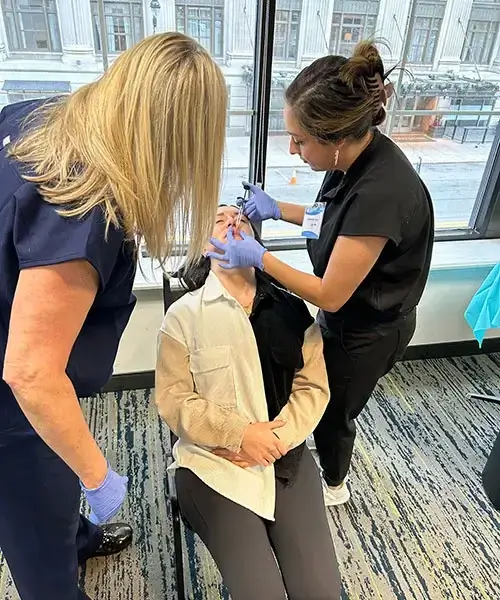Combating Smokers' Lines: Botox® vs. Other Treatments
By Dr. Stephen Cosentino
PRESIDENT OF EMPIRE MEDICAL TRAINING
Smokers’ lines are very fine lines and wrinkles that appear around the mouth over time. They’re dynamic wrinkles caused by repeated action over time, in this case pursing the lips. That’s why they’re known as smokers’ lines — people who smoke regularly purse their lips a lot.
But smokers’ lines (also known as vertical lip lines or lipstick lines) can appear in anyone. They’re often worsened by environmental factors like sun damage and poor skin care.
The good news is that several minimally invasive treatments are available for smokers’ lines. And they work. Botox® injection is the most common, but you should know about the others as well.
Smokers’ Lines & Botox: What to Expect
Treating smokers’ lines with Botox involves targeted injections around the lips and mouth, focusing on both the lower and upper lips. While each patient is different and needle placement can vary a bit, providers usually home in on the injection sites shown on this diagram.
Smokers’ line treatments involve less Botox than treatments targeting larger and more robust muscles, such as the muscles of the neck and forehead. Depending on the patient’s weight and sex and the severity of the condition, as few as two or three units of Botox may be required on each side of the mouth.
The procedure itself takes less than 30 minutes. Recovery time is minimal. Strenuous exercise is not advised for 24 hours afterward, and patients need to remain upright for at least four hours while avoiding excessive touching or rubbing of the treatment area, but can otherwise resume normal activity right away.
Results last three to six months, depending on patient-specific factors. Side effects are usually temporary and mild, with the most common being itching, swelling, and mild pain or tenderness at the injection side. The biggest longer-duration side effect to watch out for is droopy smile, which can persist for several months and is usually caused by poor injection technique.
Other Treatment Options for Smokers’ Lines
Other minimally invasive treatments for smokers’ lines include:
- Dermal fillers: Hyaluronic acid fillers temporarily plump the area around the lips, obscuring fine lines and wrinkles. Botox and dermal fillers are often used in conjunction or in succession to improve the duration and quality of results. This treatment typically needs to be repeated every 12 to 18 months. It must be completed by a provider who has advanced injectables training.
- Laser resurfacing treatment: This noninvasive laser treatment removes the very top layers of the skin, taking finer lines and wrinkles with it. Results vary and typically last a few months.
- Thread lift: Medical-grade dissolvable threads can temporarily tighten the skin around the mouth and obscure smokers’ lines. This technique is often used to address other cosmetic complaints around the mouth, such as nasolabial folds and downturned smile.
None of these treatment options produces permanent results, but providers rarely recommend surgical intervention for smokers’ lines. A disciplined skin care routine can augment these minimally invasive techniques and produce longer-lasting, more noticeable results.


